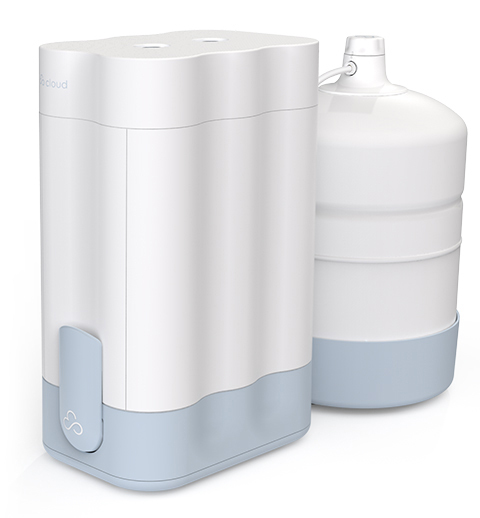Lead is a toxic heavy metal found in old water pipes, solder, paint, and even cosmetics.
When these materials break down over time, they release lead into the water supply.
Lead is one of the most common and dangerous water contaminants worldwide.
How Lead Enters Drinking Water
For decades, lead was a common ingredient in paint and gasoline until it was finally banned in 1996 (although it's still used in aviation fuel today).
Worst of all, lead-based water distribution pipes and lead plumbing components were widely used until 1986.
As old pipes corrode, they leach lead into the water right before it reaches your tap!
The most common sources of lead in drinking water are:
- Old plumbing: If your plumbing is older than you, it may contain lead. Lead was used in soldering copper pipes together up until 1986.
- Brass fixtures in your home: Some brass fixtures may contain small amounts of lead.
- High concentrations of lead in the soil or water: This can cause leach into your water supply if you’re on a private well.
- Public drinking fountains: Some older drinking fountains have lead-lined tanks. They may also have other plumbing equipment not intended for drinking water that may also be contaminated with lead.
- Rainwater tanks: If you live in an area with high lead levels in the dust and soil, the lead dust can find its way into your rainwater tanks.
However, lead in drinking water remains a serious problem throughout the country.
Health Effects of Lead In Drinking Water
Lead is a powerful neurotoxin that attacks the brain and nervous system, but it also affects soft tissues and organs.
Lead can interfere with blood cells and exposure to high levels can even cause death.
- Cardiovascular effects
- Hypertension
- Decreased kidney function
- Reproductive problems in both men and women
Pregnant women have to be extra careful because lead is stored in the bones and passes to the fetus through the placental barrier.
This can stunt the fetus’ growth and cause premature birth.
Mothers can also transmit lead through breast milk.
Why Lead In Drinking Water Is Especially Bad for Kids
Because childrens’ brains and bodies are still developing, their nervous systems are more sensitive to the effects of lead.
When lead enters the body, it interferes with the production of red blood cells and the absorption of essential nutrients.
It also attacks the brain and central nervous system.
Children who survive severe lead poisoning may have an intellectual disability and behavioral disorders.
Although there might be no immediate symptoms at lower levels of exposure, lead can slowly cause brain damage and produce a spectrum of injury across multiple body systems.
Lead can affect children’s brain development, resulting in:
- Learning and behavior problems
- Lower IQ scores
- Difficulty concentrating
- Increased impulsiveness
In severe cases, lead poisoning can cause seizures, coma, and even death.
There is no safe level of lead exposure.
That’s why it's so important to take steps to protect them.
How To Keep Your Family Safe From Lead Exposure
There are a few simple steps you can take to minimize the risk of lead exposure.
If you live in a house built before 1978, there's a chance it contains lead-based paint.
Be careful when renovating!
Take proper precautions to avoid exposure if you're planning home renovations that will disturb lead-based paint or materials.
For example, wear a mask and properly dispose of any lead-contaminated debris so it doesn't accidentally leech into the water supply.
And of course, test your water for lead.
You can find out if there are elevated levels of lead in your drinking water by having your water professionally tested by a state-certified lab.
Last but not least, install a water filtration system in your home…
How to Remove Lead From Tap Water
The Center for Disease Control only recommends two proven methods to remove lead from your drinking water effectively: distillation and reverse osmosis (RO).
Distillation involves boiling water and collecting the vapor that condenses back into liquid.
This method is very effective at removing lead but requires a lot of power and can be a slow process.
Reverse osmosis works, on the other hand, is super easy to operate and maintain.
It works by forcing water through a pressurized semipermeable membrane, plus several stages of sediment filters, carbon filters, and ion exchange resins to remove up to 99.9% of pollutants, including hard-to-remove ones like lead.
Some RO systems also include a final remineralization stage to add healthy minerals back into the water.
Whichever method you choose, follow the manufacturer’s instructions carefully to avoid accidentally contaminating your water even more!
What About Just Boiling My Water to Remove Lead?
Unfortunately, boiling water does not remove lead.
In fact, boiling water can increase the lead concentration in your water and put your family at even greater risk!
If your priority is to protect your family from lead in drinking water, installing an RO system is the best way to go.
Cloud RO Water Filters also use built-in software to track and monitor your water quality 24/7.

